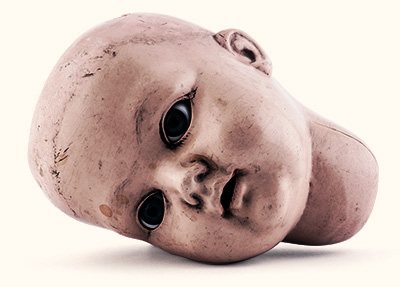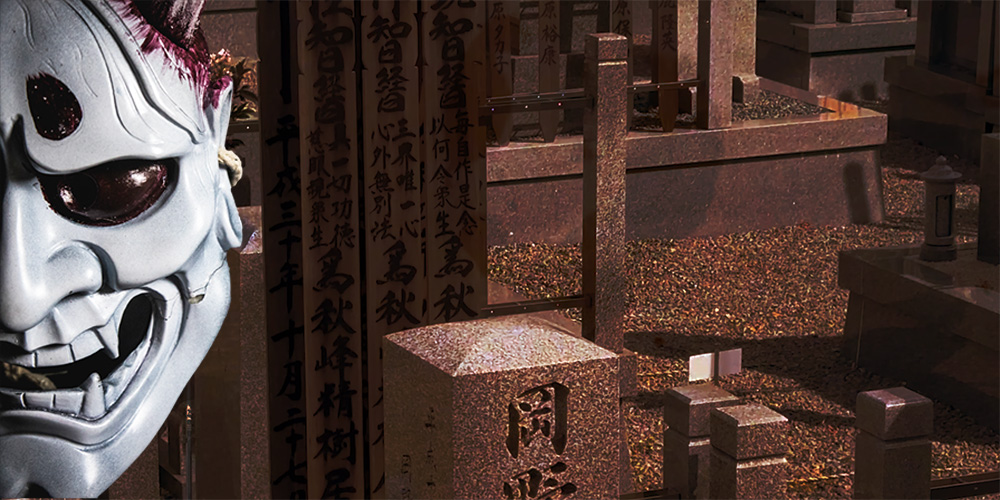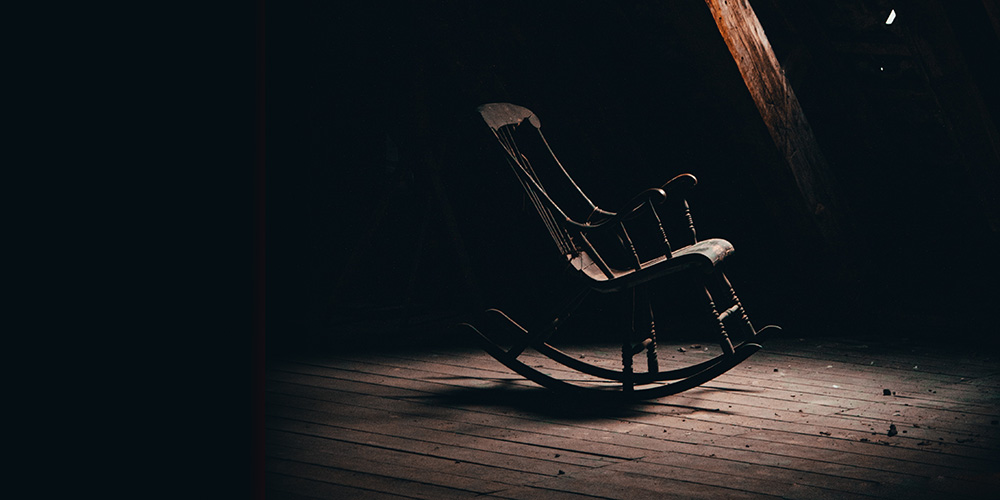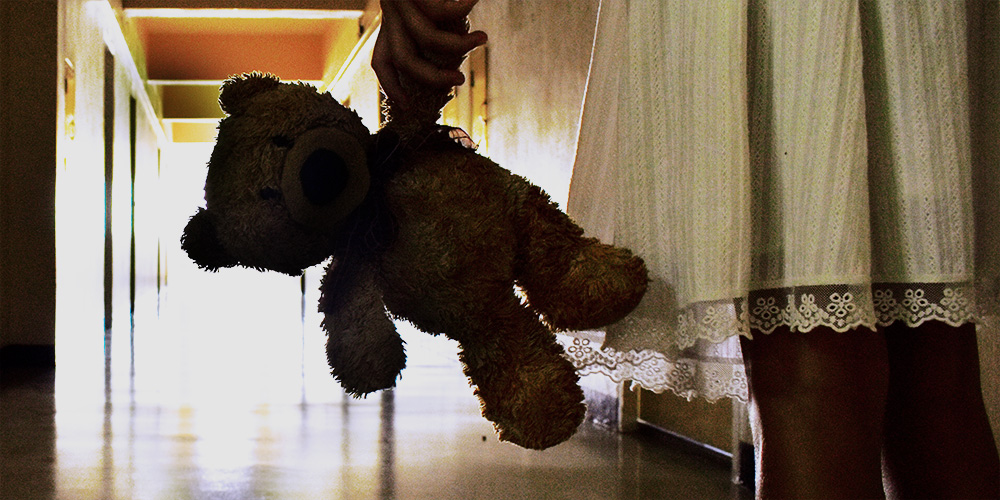“You’re never alone if you have demons,” reads the Ectogasm enamel pin on Becky’s denim jacket. When we see a dark being lurking by our bed while we fight to move but can’t, waking up and being alone is the ultimate relief. Or…are we really alone? Was that spooky presence just random dream fallout? Or can we only see it when we’re in an altered state? From “The Old Hag Phenomenon” to “Alien Abduction” nightmares, the lore around sleep paralysis and demons is utterly terrifying. But before you call your exorcist or lube up to be probed, let’s learn the science behind these sleep related hallucinations.
Already familiar enough with the science of sleep paralysis?
Scroll down for 5 podcast episodes where we interview regular folks who have seen a demon during sleep paralysis, or had other sleep paralysis experiences that felt unexplained by current scientific theories.
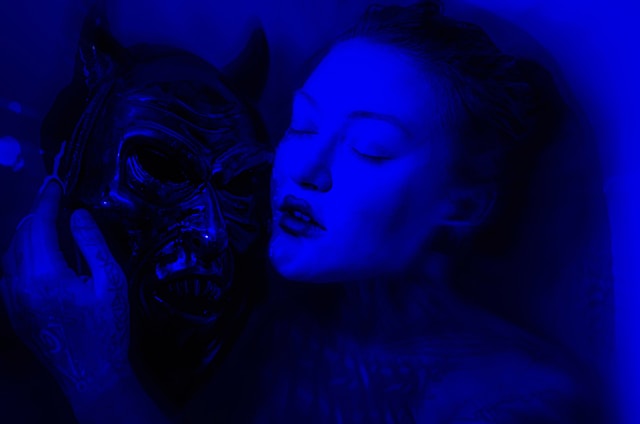
What Is Sleep Paralysis?
People describe sleep paralysis as waking up, unable to move or speak, and feeling like they’ve been cast in a twisted game of “freeze tag” with their worst nightmares. This temporary paralysis can last from a few seconds to several minutes, long enough for you to rethink all your life choices and reconsider if that late-night horror movie marathon was such a good idea as you lay there unable to move. It’s often accompanied by vivid hallucinations, just in case the paralysis alone wasn’t terrifying enough.
Imagine waking up to find yourself immobile, with an invisible force pressing down on your chest. You want to scream, but no sound comes out. Your eyes dart around the room, and then you see it—a shadowy figure lurking in the corner. This is the quintessential sleep paralysis experience, a real-life horror story that leaves many wondering if they’ve just had a brush with the supernatural.
Sleep Research
Ongoing studies continue to shed light on sleep paralysis. For instance, research has found that sleep paralysis may be linked to disrupted REM sleep cycles, which can be caused by stress, irregular sleep schedules, and sleep disorders such as narcolepsy and sleep apnea. Stay updated on new findings with publications like Sleep Medicine Reviews.
Brain Activity During an Episode of Sleep Paralysis
Brain activity during sleep paralysis involves a curious mix of wakefulness and REM sleep, creating a strange blend of consciousness and dreaming. During REM sleep, the brain remains highly active, which can lead to the vivid and lifelike experiences that characterize sleep paralysis. Research into this interplay between REM sleep and wakefulness provides valuable insights into how they might be prevented.
The REM Sleep Connection
To understand sleep paralysis, you need to know about the sleep cycle. Rapid Eye Movement (REM) sleep is the part of the cycle where you do most of your dreaming. During REM sleep, the part of the brain responsible for muscle tone decides it’s a good idea to paralyze your muscles to prevent you from acting out your dreams. Because who would want to wake up smashing their nightstand in horror, thinking there’s a monster there? You may experience sleep paralysis when this muscle immobility persists as you wake up or fall asleep, making you a temporary prisoner in your own body.
The brain is responsible for sleep paralysis. During REM, the brain sends signals to inhibit muscle movement, preventing you from acting out your dreams. Sleep paralysis occurs when these signals continue after waking or before sleep onset. So, if you want to blame someone, blame your brain for this late-night horror show. Understanding the sleep cycle and how REM fits into it is crucial for demystifying these frightening experiences.

Experience Sleep Paralysis
Lifetime prevalence rates for sleep paralysis vary, but studies suggest that a significant portion of the population will experience it at least once. Knowing that you’re not alone in this can provide some comfort and reduce the isolation that often accompanies these experiences.
People experience sleep paralysis differently, but common elements include an inability to move, a sense of pressure on the chest, and frightening hallucinations. These sleep related hallucinations can be as benign as the feeling that someone is standing by your bed, or as terrifying as seeing a supernatural entity coming to get you.
Characteristics of Sleep Paralysis Hallucinations: Know Your Enemy
Understanding the characteristics of sleep paralysis, such as muscle paralysis, hallucinations, and the transition between sleep and wakefulness, can help demystify the experience. Knowledge is your best defense against the fear and anxiety that often accompany these episodes.
Meet the Sleep Paralysis Demon
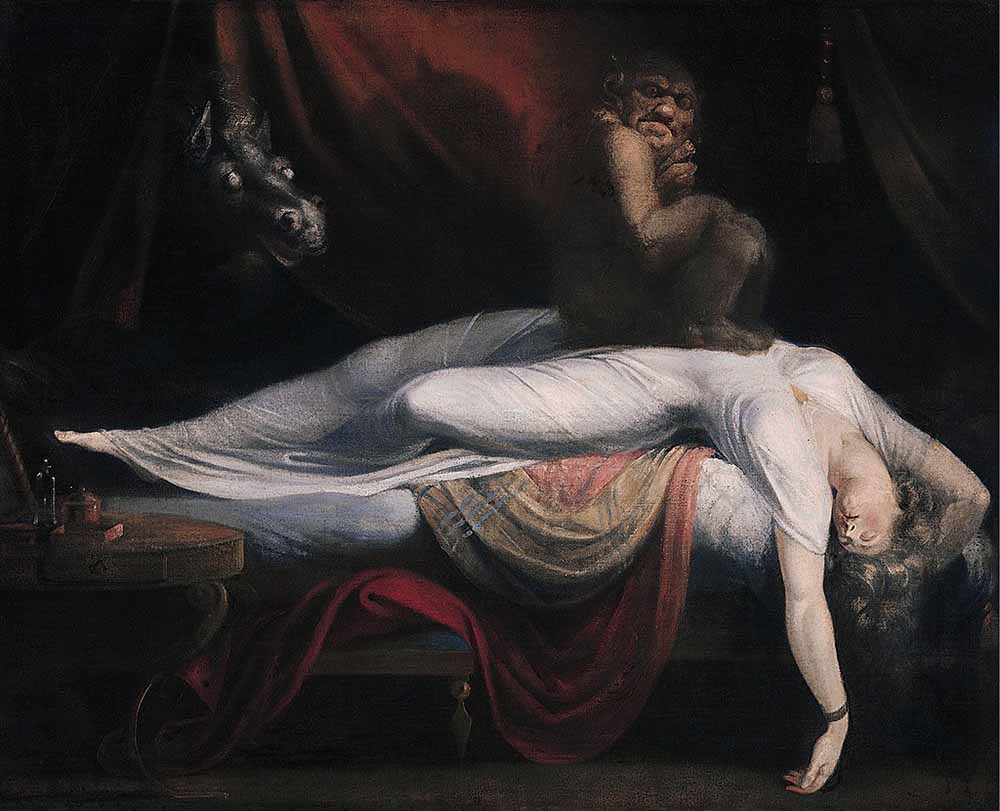
Many victims of sleep paralysis report encountering sleep paralysis demons, sinister figures that seem all too real in the moment.
A sleep paralysis demon is a common hallucination during these episodes. It’s the brain’s equivalent of a haunted house attraction, complete with an malevolent entity, often shadowy and menacing, lurking in your room. The sensation of being watched or suffocated by this entity adds to the terror, because nothing says “sweet dreams” like a demonic creature staring into your soul.
Intruder hallucinations, where people perceive an malevolent force or alien abduction scenario, are common during sleep paralysis. These vivid experiences can be linked to our brain’s attempt to make sense of the paralysis and the fear it induces. Because when you can’t move, why not spice things up with a little alien probing or ghostly intrusion?
Hypnagogic and Hypnopompic Hallucinations
Hypnagogic hallucinations occur as you are falling asleep, while hypnopompic hallucinations happen upon waking. Both types can occur during sleep paralysis, because why should nightmares have a monopoly on scaring the pants off you? Between sleep and wakefulness, these hallucinations can blur the line between dreams and reality, creating terrifying experiences.
A common hypnopompic hallucination involves seeing shadowy figures or intruders in your room as you wake up. It can make you wonder if you’ve stepped into a real-life ghost story, and fuel beliefs in sleep demons or supernatural entities. During the transition of falling asleep, these vivid images of sleep demons can feel overwhelmingly real.

Culture, Medicine, and Psychiatry
Waking nightmare hallucinations are basically nightmares one experiences during sleep paralysis episodes. The night mare can add frightening hallucinations, or sensing impending doom, on top of the already frightening situation of feeling paralyzed.
Sleep Disorders and Sleep Paralysis Episodes
Sleep paralysis may occur as part of other nocturnal disorders, such as narcolepsy, or due to sleep deprivation. Certain neuropsychiatric disease, such as schizophrenia and bipolar disorder, can cause one to experience sleep paralysis as a symptom. Sleep apnea, a condition where breathing repeatedly stops and starts during sleep, can also be associated with sleep paralysis.
Isolated sleep paralysis isn’t really a great concern, but when it becomes chronic, there’s definitely something wrong. Identifying underlying health and sleep issues can help one prevent sleep paralysis from recurring. Nothing says “get your life together” like waking up to a demon on your chest.
Mental Health and Sleep Paralysis
Sleep paralysis has pathologic associations with conditions that are common in the general population, such as anxiety, depression. Sexual abuse has also been linked to episodes of sleep paralysis, as does post-traumatic stress disorder (PTSD). These traumas can lead to heightened anxiety and stress, both of which are triggers for the condition. Victims may experience specific fears during sleep paralysis, like hostile incubus hallucinations. Seeking support and treatment from a mental health professional can be beneficial for those experiencing recurrent/isolated sleep paralysis.
Sleep Hygiene and Prevention
Maintaining healthy snoozing habits is key to preventing sleep paralysis. Regular sleeping schedules, a comfortable sleeping environment, and avoiding stimulants before bed can improve sleep quality and reduce the likelihood of episodes.
Sleep Paralysis Demons
Transcultural psychiatry examines how cultural beliefs and practices influence the experience and interpretation of mental health conditions. Exploring these perspectives through transcultural psychiatry can provide a broader understanding of sleep paralysis and how it manifests differently around the world.
The interpretation of sleep paralysis varies widely across different cultures. Some see it as a purely medical condition, while others view it as a supernatural event, influenced by cultural beliefs and folklore.
The “Old Hag Phenomenon” is a term from folklore describing a demonic entity that sits on the chest of sleepers, causing paralysis and fear. Various cultures have their own versions, reflecting how sleep paralysis is always interpreted through a particular cultural filter.
One modern take on sleep paralysis involves space alien abduction scenarios. These vivid hallucinations reflect contemporary cultural fears and anxieties, showing how sleep paralysis can manifest differently across time and cultures. Whether it’s sleep demons or space aliens, even the sleeping brain knows how to keep things interesting.
Feeling an evil presence during sleep paralysis is a common experience among the general population. This sensation is likely a result of the brain’s attempt to make sense of the paralysis and associated hallucinations. Recognizing this can help you keep calm the next time a nocturnal intruder shows up.

Preventing Sleep Paralysis
Preventing episodes of sleep paralysis starts with good sleep habits. Ensure you have a consistent sleeping schedule, avoid caffeine and heavy meals before bedtime, and create a relaxing bedtime routine. Most of all, get enough sleep.
Poor sleep quality, whether due to stress, an uncomfortable sleeping environment, or other factors, can lead to an episode of sleep paralysis. Creating a sleep-friendly environment and addressing any underlying issues can help improve your sleep quality and reduce occurrences.
Sleeping position can influence the likelihood of experiencing sleep paralysis. Studies suggest that sleeping on your back increases the risk, so finding a comfortable side or stomach body position might help prevent episodes.
Relaxation
Relaxation techniques, such as progressive muscle relaxation and deep breathing exercises, can help reduce stress and anxiety, which are often associated with sleep paralysis. These techniques involve tensing and relaxing muscle groups to promote overall relaxation and reduce stress.
Guided meditation for goths
If you’re not the kind of person who can relax to typical guided meditations, we get you. Sometimes it feels like every guided relaxation session out there is basically the same. Well, not this one. Check out our Meditations for Goths on YouTube.
Central nervous system (CNS) drugs can help regulate sleep patterns and may reduce the frequency of episodes. Consulting with a healthcare professional can help determine if this might be a treatment option.
Supernatural Beliefs and Sleep Paralysis
Supernatural beliefs about sleep paralysis are common due to the vivid and often terrifying nature of the episodes. While science provides explanations, the cultural and historical contexts add layers of meaning to these experiences. Whether you chalk it up to ghosts, demons, or biology, sleep paralysis just feels paranormal.
There are also a few phenomena associated with sleep paralysis that lend some clout to its supernatural reputation.
Lucid Dreaming
Lucid dreams, or dreams where you realize that you’re dreaming within the dream itself, can sometimes overlap with sleep paralysis. These states involve heightened awareness and control within the dream world, which can be fun under normal circumstances. Becky has mastered the art of lucid dreaming by developing the habit of poking her left palm with her right index finger at regular intervals throughout the day. Her goal is always to punch right through her palm, like a receipt on a spike at a 24-hour diner. Because this is such a habit in daily life, she’ll continue to poke away in her dreams, but when the finger penetrates the palm, that means this must be a dream. In theory, you can develop this skill by starting an impossible habit of your own like Becky’s, although Diana hasn’t been able to quite get it to work for her yet.
Out of Body Experiences
Out of body experiences (OBEs) can also occur during sleep paralysis, adding another layer of surrealism to the condition. OBEs are like unintentional astral projection. These experiences involve a sensation of floating outside your body, which can be both exhilarating and terrifying. Embracing the adventure can help reduce fear through curiosity.
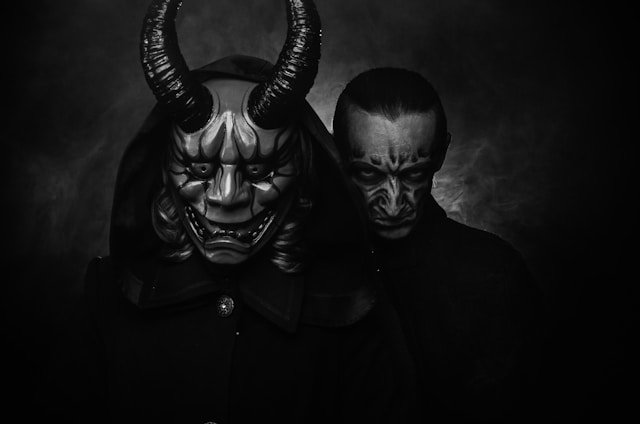
When Sleep Paralysis Demons Can’t Be Explained
So, does sleep paralysis stem from demonic forces? While the episodes can certainly feel like encounters with otherworldly beings, science offers more grounded explanations. Sleep paralysis, with its associated hallucinations and physical sensations, is a fascinating intersection of sleep, neurology, and culture. Understanding the mechanics of REM sleep, muscle paralysis, and the brain’s role in these experiences demystifies the phenomenon somewhat.
True Paranormal Stories About Sleep Paralysis and Demons
Then again, there are sleep paralysis stories that cannot be easily explained.
What if the demon is always there, but we can only see it during sleep paralysis?
For example, one person we interviewed told us sleep paralysis didn’t cause her demons, but only revealed them. Danielle’s theory, based on her own teenage first-hand paranormal experiences, is that sleep paralysis may have a less common cause: ghosts. Because her entire family heard strange noises throughout the house and other strange events, she believes that the shadow people were there in her childhood bedroom all the time, but she could only view them when she was experiencing sleep paralysis. When the haunting stopped, and her family stopped noticing strange noises in the house, Danielle’s sleep paralysis suddenly resolved.
What if many unrelated people in the same place experience a sleep paralysis demon at the same time?
Not all sleep paralysis demons can be explained as hallucinations, either. If feeling like you’re being physically attacked by a demon during sleep paralysis is a personal experience, then how do you explain the exact same thing happening to over a dozen young women in a dorm, at the same time of night, over the course of several weeks? And if you had been one of these women, would you be able to brush it off as a completely natural occurrence? Or would you accept that maybe, you too, had come face to face with an actual demon?
What if sleep paralysis demons only bother you when you sleep in one particular room in a house with other signs of a haunting?
One guest told us that her childhood friend’s house was haunted. For one, a full-body apparition disappeared from her friend’s porch in a streak of white light. Other paranormal things happened in the house, like intense loud window shaking for no discernable reason. Sleeping over at that same house, she experienced terrible sleep paralysis, featuring demons chanting, as though preparing her for a ritual of some sort. But she only ever experienced isolated sleep paralysis when sleeping in her friend’s mom’s bedroom. Interestingly, the paranormal activity significantly receded after her friend’s mom moved out. From then on, she was able to rest soundly in that room. Could it be that her friend’s mom was haunted, and not the house?
Listen to her story, plus other weird paranormal stories from East Tennessee.

What if other people can see the same demon?
Every night, a shadow figure emerged from Bill’s closet to stare at him. He knew he wasn’t having sleep paralysis, because he could move, but he was absolutely certain moving was a very bad idea. The entity in the closet began to make him groggy. It seemed to induce brain fog and even manifest physical illness. As a self-proclaimed horror-freak and the offspring of generations of Roma people with inherited psychic gifts, Bill is open-minded yet rational about the paranormal. Eventually, he wondered if he might be seeing a demon. By the light of day, Bill was able to convince himself there’s nothing too bad happening. That is, until his roommate and friend saw the figure, too.
What if the sleep paralysis entity interacts with physical objects?
One guest told us a story about a figure in a cowl-hooded robe that scurried around his bed at night. He’s seen this same strange entity throughout his life, usually during sleep paralysis, so it seemed like a typical case. Except that his encounters with the sleep paralysis demon only occurred after other strange things began happening in his house. Oh, and it stole things from him!
Do You Have Something Visiting You During Sleep Paralysis?
Have you had sleep paralysis encounters that don’t seem to fit within the logical scientific explanation of sleep-induced hallucinations? Why not apply to tell your story on the next episode of Homespun Haints, so you can share your experiences with people who have had similar ones?
Whether you chalk it up to supernatural forces or mere biology, sleep paralysis and the demons who live there are fascinating things to experience. Until the next time we see you in your nightmares, have a spooky day!

